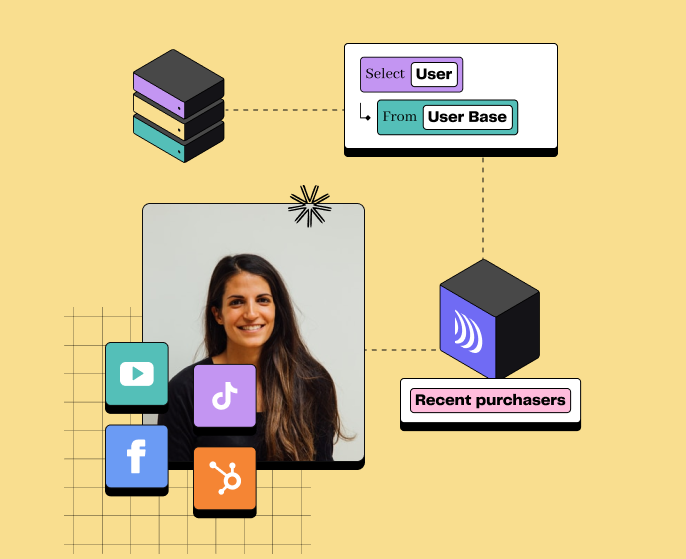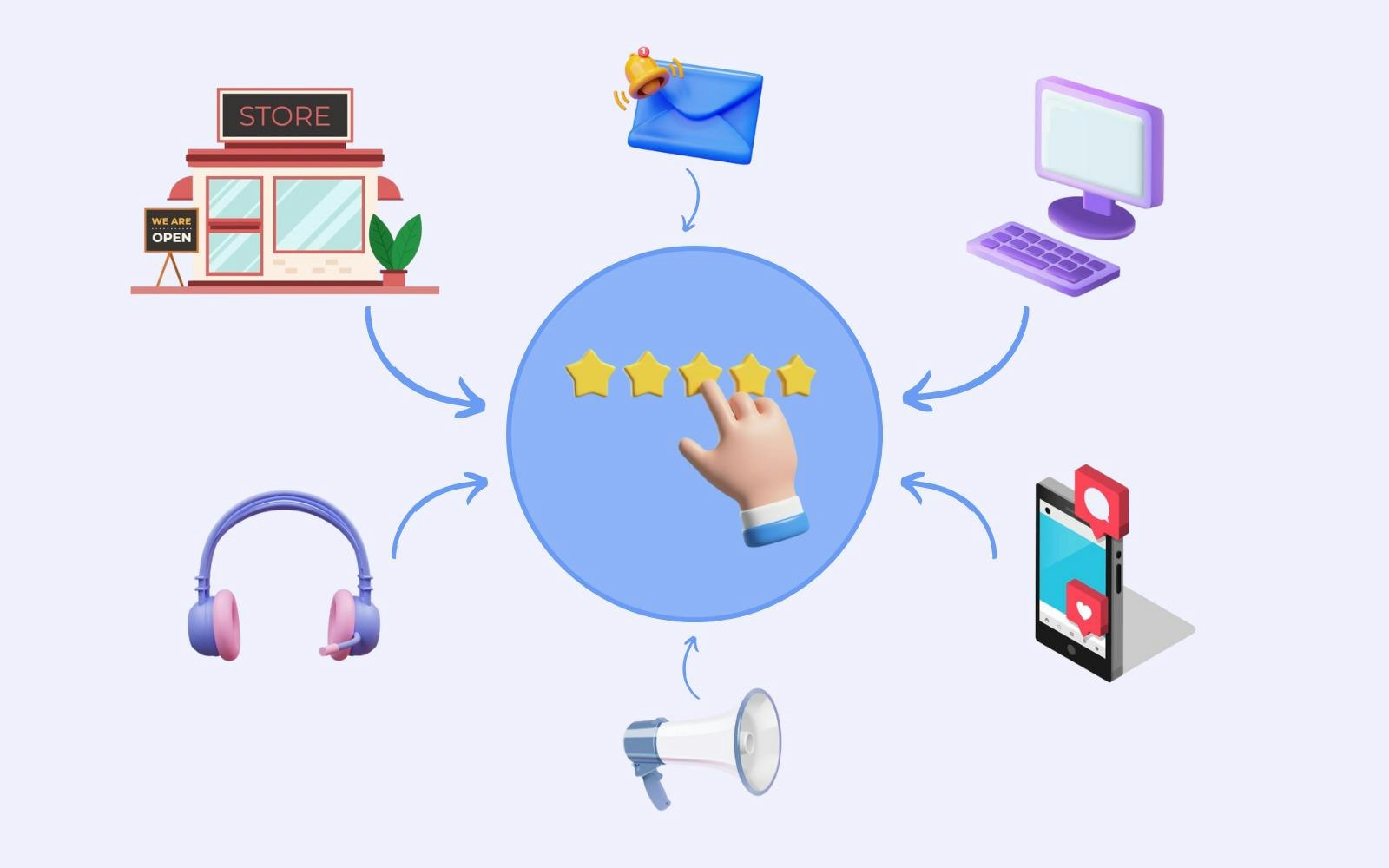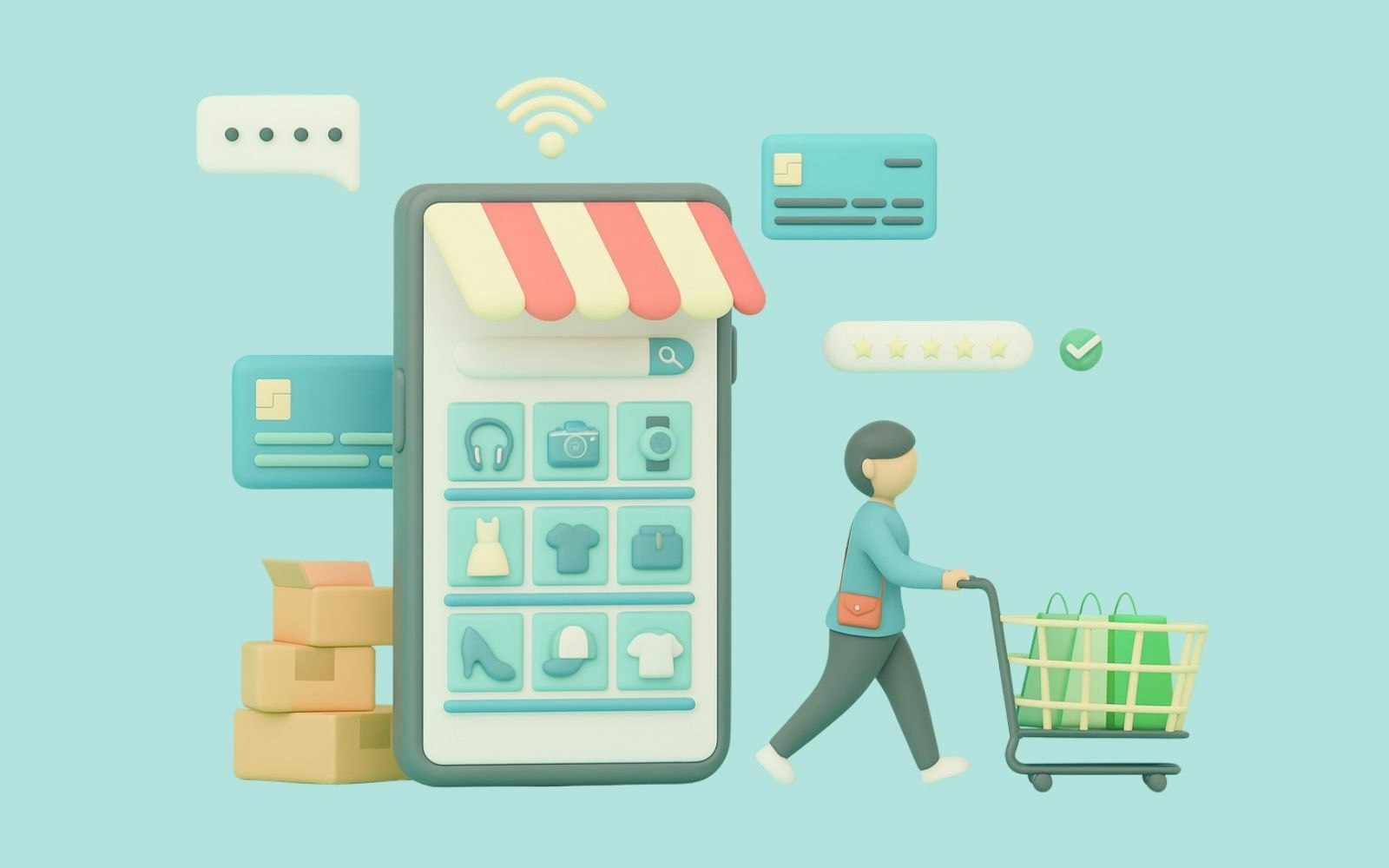
Phygital for a better customer experience
7min • Last updated on Sep 1, 2025

Olivier Renard
Content & SEO Manager
According to a recent Klarna study, over 8 in 10 consumers visit a website or an app before heading to a physical store. Moreover, customers who shop in-store after interacting online tend to spend more than those using only one touchpoint (McKinsey).
For a long time, physical stores and digital channels were considered opposites. Yet, the most successful brands are those that manage to create a seamless experience between the two.
Key takeaways:
Phygital means combining digital with physical retail to deliver a smooth, personalised customer experience.
It’s more than just tools (kiosks, QR codes, etc.); it’s a true omnichannel strategy enhancing the customer journey.
Brands like Sephora, Nike, Amazon or Ikea show how phygital can improve both customer satisfaction and commercial performance.
A successful phygital approach relies on the effective use of customer data, in real time and across all channels.
👉 Why are more and more brands adopting a phygital strategy? Discover how this approach reinvents the customer experience by leveraging data. 🎯
What is phygital?
Phygital is a portmanteau of physical and digital.
An effective phygital strategy removes the boundaries between traditional offline points of sale and online channels.
Its goal is to create a seamless and consistent customer experience, regardless of the touchpoint.
In practice, phygital works both ways. It involves:
- Bringing digital tools into physical spaces (interactive kiosks, augmented reality, QR codes, mobile payments…),
- Enhancing online channels with real-world elements (in-store visits, click & collect, in-store events…).
Closely linked to omnichannel strategies, phygital focuses on the customer’s lived experience, bridging the gap between online and offline to build a smooth, tailored journey.
Accelerated post-Covid-19, phygital goes beyond multichannel, which merely offers multiple separate channels.
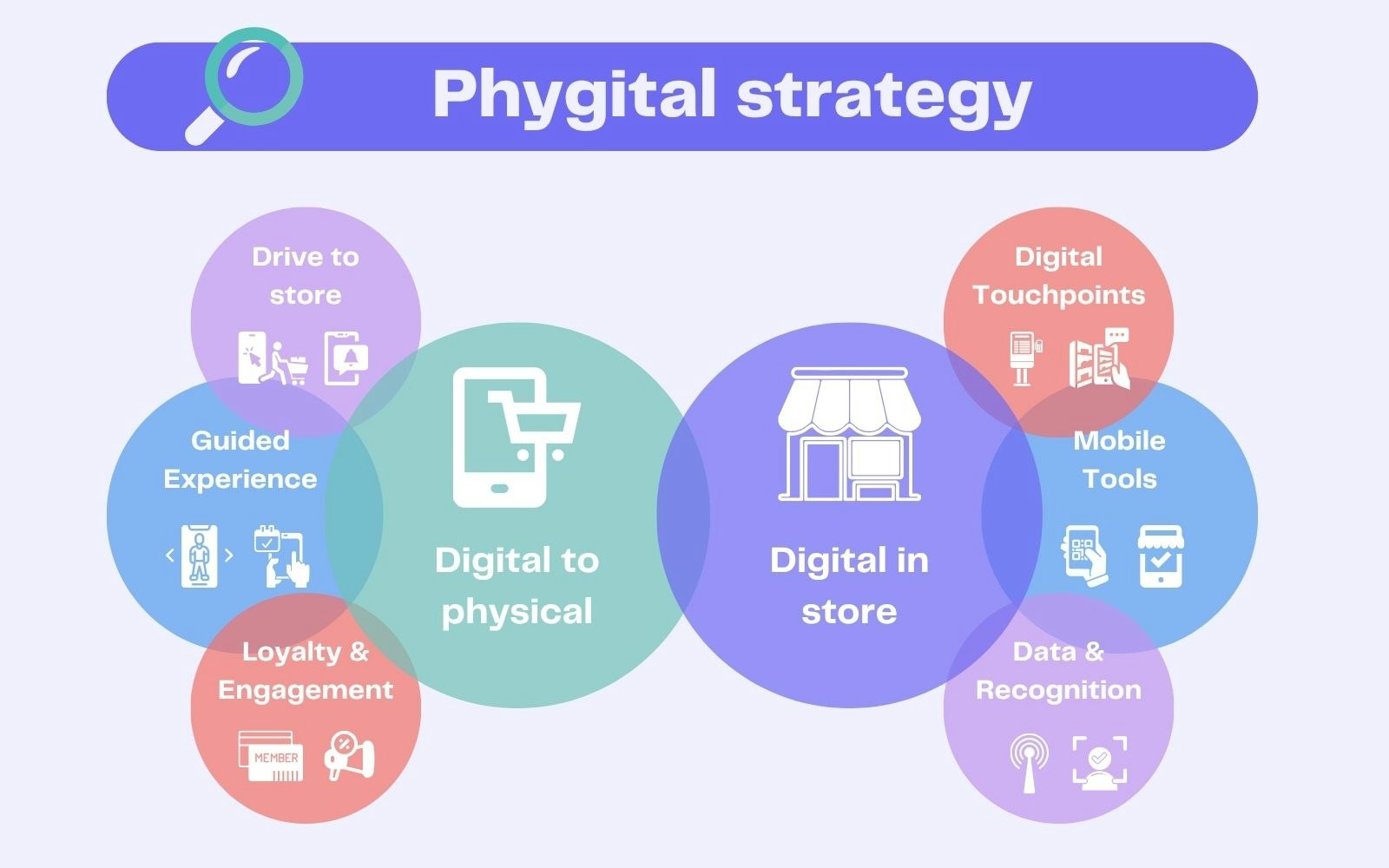
An approach aligned with customer expectations
Shopping behaviours have changed dramatically, with increasingly fragmented customer journeys. Consumers do their research in-store or online, read reviews, and compare prices.
We now speak of showrooming (testing in-store, then buying online), or ROPO (Research Online, Purchase Offline). Brands must adapt to these hybrid behaviours.
Customers expect speed, fluidity and continuity across channels. A purchase started on mobile should be completed and collected in-store. A loyalty programme must work both online and offline.
Even the slightest friction in the customer journey can lead to a lost sale. Traditional retailers are also challenged by DNVBs (Digitally Native Vertical Brands), which master online experiences and now open connected or pop-up stores.
In this context, phygital has become a must-have strategy, helping brands reconnect all touchpoints to meet evolving customer expectations.
How to implement an effective phygital experience?
This requires a deep understanding of the customer journey, the right technologies, and smooth coordination between physical and digital channels.
Analyse touchpoints: Where does the customer journey start? What are the key moments before, during and after the purchase? The goal is to eliminate friction and ensure a seamless experience across site, app, store or customer service.
Technology: Phygital uses tools that bridge physical and digital environments. It’s not about piling on gadgets but selecting the right technologies that enhance the shopping experience.
These tools help access product information, create immersive experiences, or streamline purchasing. Examples: touch kiosks, QR codes, augmented reality, or RFID.
Ensure omnichannel coordination: A successful phygital strategy requires strong alignment across channels. That means marketing, digital, data and retail teams must work together, offers should be synchronised, data fully leveraged, and KPIs shared.
Measure, test, adjust: Track user behaviour, conversion rates, frontline feedback, NPS: all are key to continually refining your approach.
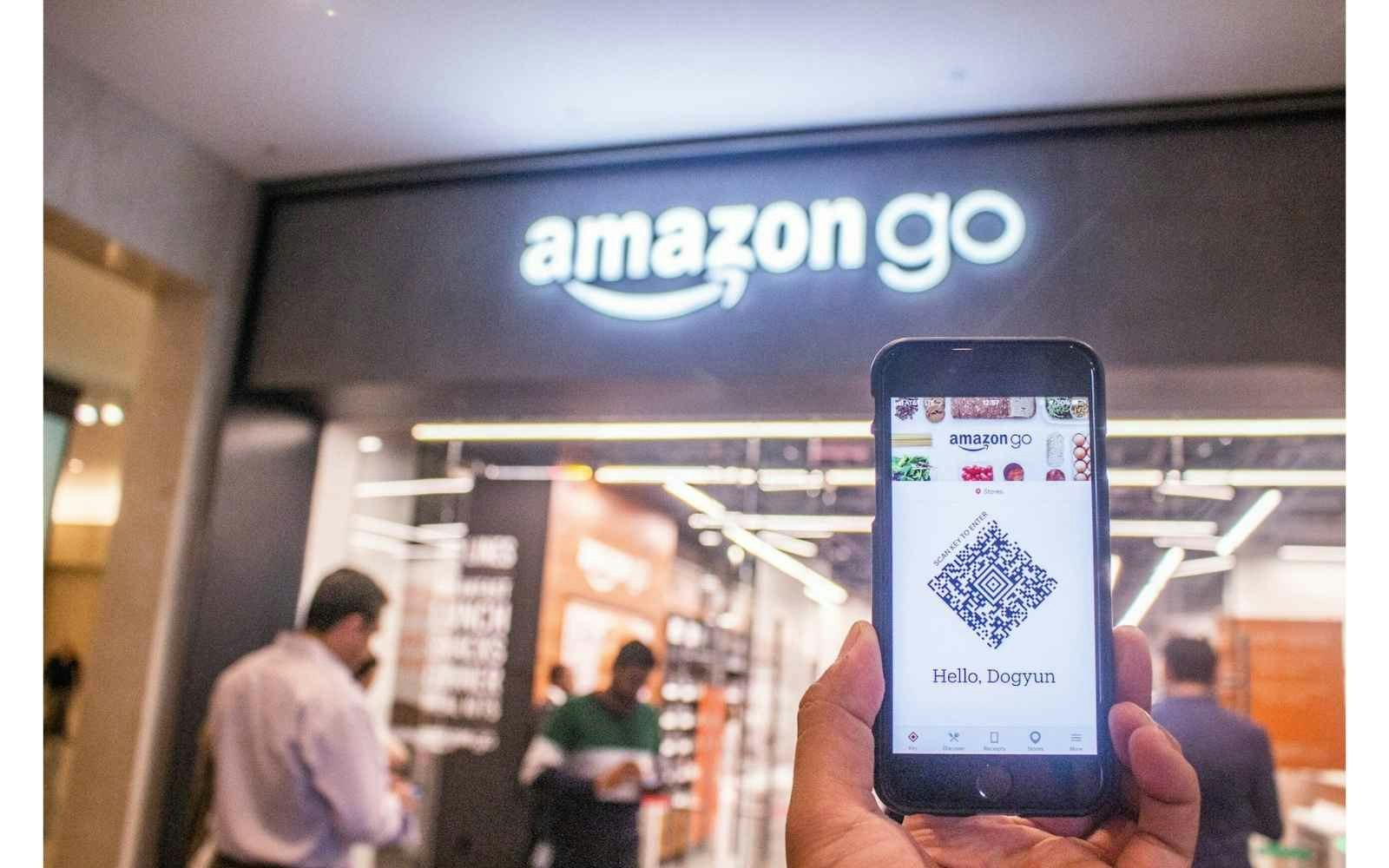
Amazon Go stores have created a buzz with a highly advanced phygital strategy (credit: Simon Bak)
A few examples of successful strategies
Retail: from click & collect to in-store apps
Sephora offers in-store kiosks and an app to build wishlists, scan products and receive personalised advice. The French brand made headlines with its interactive Fragrance Discovery kiosk, which lets users explore perfumes via a touchscreen.
Nike has rolled out click & collect across its stores, while the Decathlon Shopping app allows users to scan items with their phones to save time, or to place orders directly via the app for quick in-store pickup.
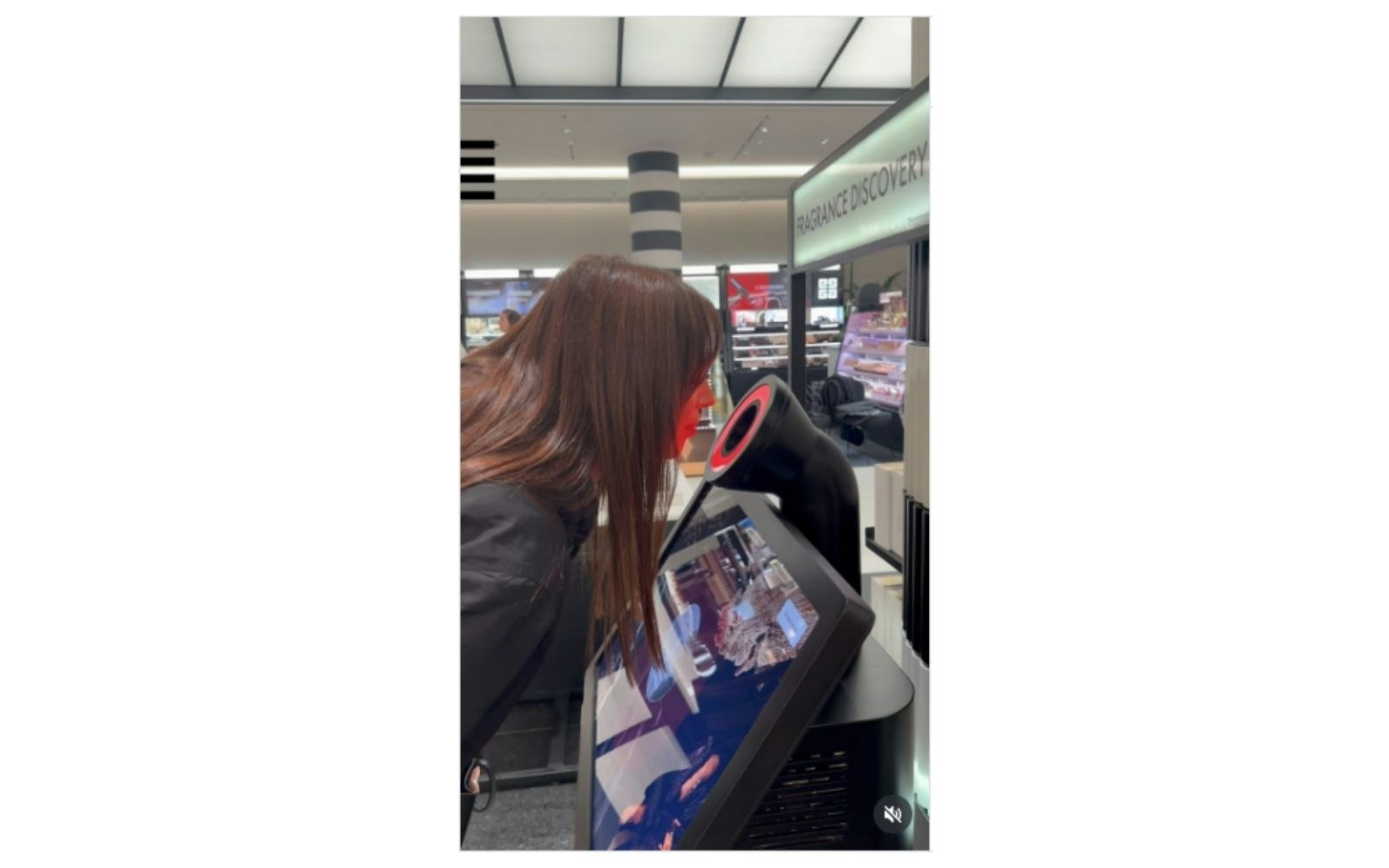
Sephora fragrance discovery (credit: Instagram Sephora)
Luxury and events: immersive technologies
Brands like Dior and Burberry incorporate immersive journeys, featuring augmented reality or interactive in-store experiences.
Some events use facial recognition to send photos directly to participants’ phones, or touchscreen interfaces to personalise the welcome and recommendations.
Reversed e-commerce: digital goes physical
In the US and UK, Amazon Go has removed checkout counters with Just Walk Out technology.
DNVBs like Glossier and Jimmy Fairly open pop-up stores, offering real-world contact while remaining connected to their digital channels.

Glossier pop-up store in Paris (credit: Random Studio Glossier)
Data: the strategic asset of phygital
Phygital aims to deliver a seamless omnichannel experience. With digital, everything becomes measurable and customer data lies at the heart.
Unify online and offline data
Every interaction, whether it occurs online or in-store, generates valuable insights: browsing behaviour, purchases, abandoned baskets, checkouts at tills or kiosks, or conversations with sales staff…
Yet this data too often remains siloed. In such a context, delivering a consistent customer experience becomes a real challenge.
The key is to unify all this data within a single customer view. This makes it possible to recognise a client in the showroom after a visit to the website, or to send a personalised offer following an in-store visit.
Track the cross-channel journey
An effective phygital strategy depends on the ability to track and understand the full customer journey, which requires:
Event tracking on the website or app, first-party data collection, and monitoring in-store interactions (with staff, kiosks, payment systems),
Customer scoring to anticipate purchase intent and lifetime value (LTV),
Dynamic segmentation to tailor marketing actions.
This cross-channel tracking enables the creation of more relevant engagement scenarios, whether triggered online or in the field.
Deliver a personalised experience
By collecting and integrating data into a single source of truth, brands can personalise the customer experience in real time across all channels.
Examples include:
showing a specific interaction or offer on mobile as the customer enters the store,
tailoring product recommendations on a screen,
sending a personalised follow-up email after an in-store visit without purchase.
It is this ability to tailor messaging and deliver memorable immersive experiences that makes a phygital strategy truly effective.
💡 DinMo: the composable CDP powering phygital
DinMo’s Composable Customer Data Platform helps you fully leverage your data to enhance your omnichannel strategy:
Unify customer data from website, app, social media and physical stores,
Create audience segments based on behavioural criteria or predictive attributes (e.g., estimated LTV),
Activate across channels in a few clicks: marketing, CRM, Ads or retail tools,
Personalise at scale, delivering the right message, to the right person, on the right channel, at the right time.

DinMo predictive models
You maintain full control of your data and turn it into actionable outcomes across your ecosystem.
Challenges to overcome
Phygital opens up new horizons and offers numerous opportunities for brands. However, its implementation does come with challenges.
A seamless experience
The main challenge is ensuring a consistent customer journey across all channels. That requires tight coordination between physical stores, digital tools, field teams and customer data.
An offer available in the app but not in-store? A logistics misstep? Without alignment, the experience becomes frustrating and the phygital promise collapses.
Profitability and tech choices
Phygital requires investment: kiosks, QR codes, RFID, system connectors, staff training, etc. Brands must measure ROI from the start: uplift in basket size, in-store conversions after online visits, customer satisfaction, loyalty…
Brands must avoid gimmicks and implement the most relevant tools based on their industry, customers, and objectives.
💡 At the Wimbledon Championships this year, The Walled Garden Larder shop introduced the Tap + Go technology. Operating on the same principle as Amazon Go stores, customers could purchase their lunch simply by tapping their credit card at the entrance.
And then? Nothing else. You take what you need and walk out. The system relies on ceiling-mounted cameras to track purchases, with no errors reported on receipts. However, for customers still unfamiliar with this kind of technology, the experience can feel somewhat disconcerting.
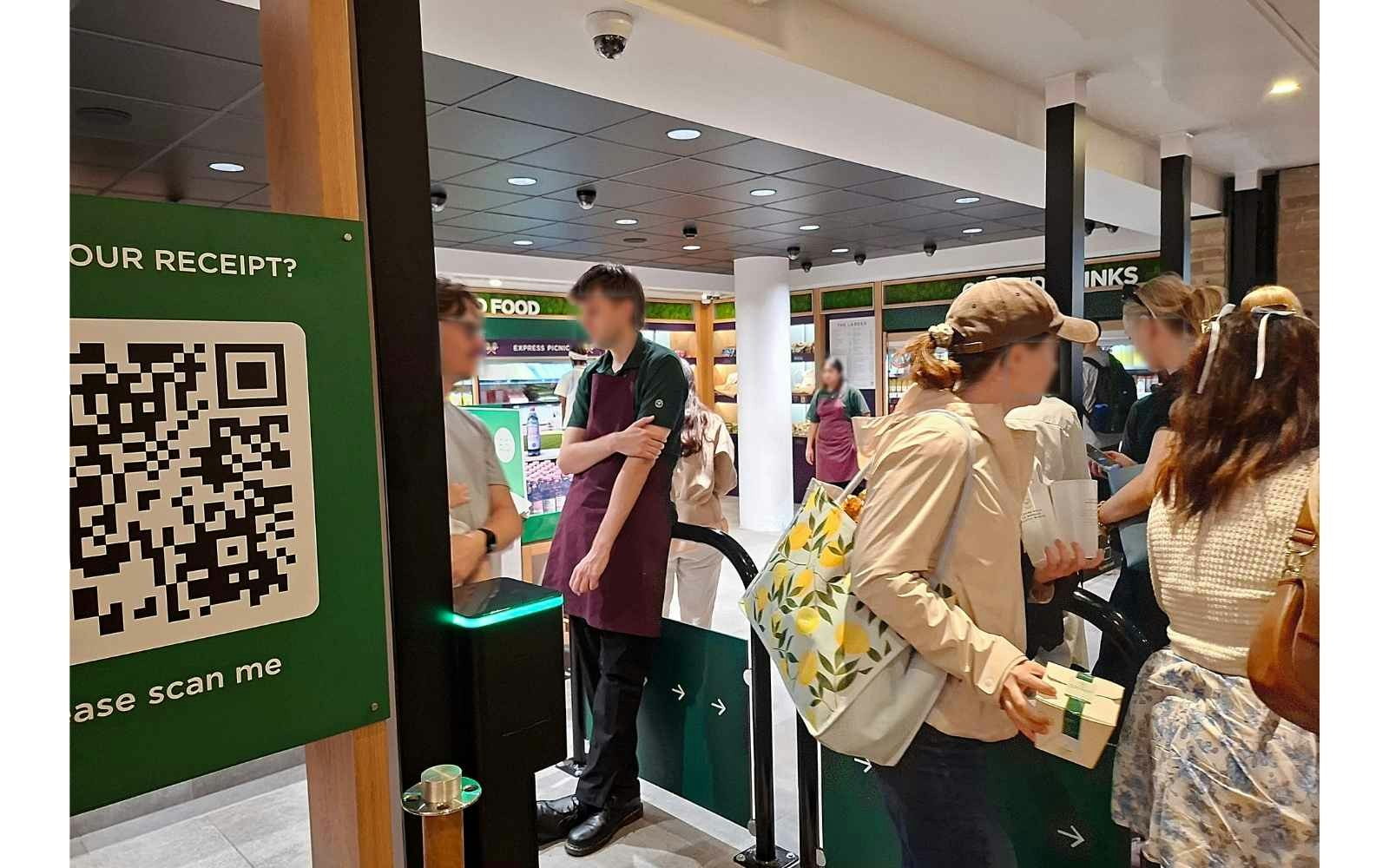
The Walled Garden Larder Wimbledon
Protecting customer privacy
Phygital requires a nuanced use of customer data at various stages of the journey and across multiple channels. This raises significant compliance challenges with current regulations (GDPR, CCPA).
To maintain consumer trust, it is essential to ensure:
transparency regarding data usage,
respect for communication preferences,
system security.
A well-defined data governance framework enables brands to fully leverage the benefits of phygital without compromising privacy.
The future of phygital: smoother, smarter, more data-driven
Phygital continues to evolve, fuelled by technology and rising customer expectations.
With artificial intelligence, new experiences emerge: voice assistants, agentic marketing, wallet integrations, real-time recommendations, messaging triggered by weather or foot traffic…
Brands are also focusing on long-term success through first-party data. Better customer understanding leads to stronger retention and higher lifetime value.
Some incorporate phygital into their sustainability strategies, by optimising logistics or reducing product returns.
Once thought obsolete due to digital, the physical store is now a strategic asset: a place for reassurance, a channel for marketing activation, and an integrated touchpoint.
Phygital unifies, synchronises and enhances all channels to deliver a smart, fluid, high-performing customer experience.
FAQ
What’s the difference between phygital and omnichannel?
What’s the difference between phygital and omnichannel?
Omnichannel is a distribution strategy aimed at coordinating and integrating all channels (web, mobile, in-store). Phygital focuses primarily on the customer experience, taking a user-centric approach.
Through the use of technology, the physical and digital worlds complement each other to deliver a seamless journey.
How can you measure the effectiveness of a phygital strategy?
How can you measure the effectiveness of a phygital strategy?
The effectiveness of a phygital strategy is measured using specific indicators such as:
- the in-store traffic generated by digital campaigns,
- the usage rate of connected services in-store (kiosks, apps, QR codes),
- or the analysis of omnichannel behaviour (e.g. customers who viewed a product online before purchasing it in-store).
This data complements the usual metrics such as average basket size, conversion rate, and customer satisfaction rate. The analysis of unified data, both online and offline, makes it possible to assess the overall performance of the phygital journey.

















